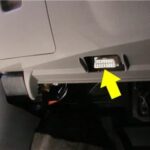It’s a common question in auto repair circles: “Can you use an OBD2 scanner to test a starter?”. As a seasoned content creator at techcarusa.com and a dedicated auto repair enthusiast, I’ve encountered this query numerous times. Drawing from hands-on experience and technical understanding, let’s delve into whether an OBD2 scanner can effectively diagnose starter issues.
While an OBD2 scanner is an invaluable tool for diagnosing a wide array of vehicle problems, its direct capability to test a starter is limited. OBD2 scanners primarily read data from your car’s Engine Control Unit (ECU) and other modules, focusing on emissions-related systems and engine performance. Starters, on the other hand, are electromechanical components. An OBD2 scanner does not directly interface with the starter motor to assess its mechanical or electrical health in a comprehensive manner.
However, this doesn’t mean your OBD2 scanner is entirely useless when diagnosing starter problems. It can provide indirect clues and help narrow down potential issues. For instance, if you are experiencing starting problems, an OBD2 scan can help you:
- Check for related fault codes: While there isn’t a specific code for a failing starter, you might find codes related to low voltage, issues with the crankshaft position sensor, or other engine management faults that could be triggered by or contribute to starting problems.
- Monitor battery voltage: A healthy battery is crucial for starter operation. An OBD2 scanner can display real-time battery voltage. Low voltage readings, especially during attempted starts, can indicate a battery problem that mimics starter issues.
- Assess engine cranking parameters: Some advanced OBD2 scanners can display engine RPM during cranking. Unusually low or erratic RPM readings during startup attempts could suggest a starter struggling to turn the engine over, although this is not a definitive starter test.
My personal experiences further illustrate this point. In my BMW E46 with 100,000 miles, I faced a no-crank situation. An OBD2 scan might not have pinpointed the starter directly, but observing the symptoms – complete silence when turning the key – and ruling out obvious battery issues led me to suspect the starter. Upon replacement, the new starter dramatically improved cranking speed, revealing the old starter’s slow decline.
Similarly, with my E90 at 386,000 miles, while replacing the CCV (Crankcase Ventilation Valve), I opted for preemptive starter replacement. Again, the difference in cranking speed with the new starter was noticeable. In neither case would an OBD2 scanner have predicted the starter failure beforehand, but understanding the system and observing performance changes was key.
Therefore, while you can’t directly “test” a starter with an OBD2 scanner in the way you would test engine sensors, it’s a valuable tool in the diagnostic process. Before concluding your starter is faulty, use your OBD2 scanner to:
- Rule out battery and charging system issues: Check for low voltage codes and monitor battery voltage.
- Look for related engine management codes: Codes that might indicate broader engine control problems affecting starting.
- Observe cranking RPM (if your scanner allows): Unusually low RPM can be a soft indicator, but not conclusive.
Crucially, always remember to check the basics first, as highlighted in my experience. Inspect your battery terminals for corrosion, examine the main engine ground cable for secure connections, and check the positive battery cable, particularly where it passes through the rear wheel well, for corrosion. These often-overlooked elements can cause starting problems that are easily mistaken for a faulty starter.
In conclusion, while an OBD2 scanner isn’t a dedicated starter tester, it’s a helpful diagnostic aid. Combine its insights with a thorough understanding of your vehicle’s starting system and practical observation of symptoms like cranking speed, and you’ll be well-equipped to diagnose starter issues effectively.
